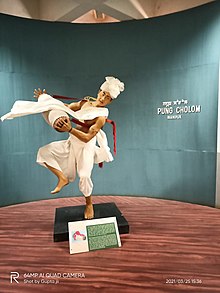IGRMS Bhopal
About Company
Indira Gandhi Rashtriya Manav Sangrahalaya also referred to as the National Museum of Humankind, or Museum of Man and Culture is a museum located in Bhopal, Madhya Pradesh, India. The museum spreads over an area of about 200 acres on the Shymala Hills in the city. This museum depicts the story of mankind in time and space. It is the largest ethnographic museum in India.
Creation of Indira Gandhi Rashtriya Manav Sangrahalaya
A nucleus of a ‘National Museum of Man’ began functioning from New Delhi from 21st March, 1977 as part of the Anthropological Survey of India. In 1978 it was separated from the Anthropological Survey of India and declared as an Independent Subordinate Office of the Department of Culture (now Ministry of Culture), GOI. In March 1985 the Museum was renamed as Rashtriya Manav Sangrahalaya, at the instance of the then Prime Minister, Mrs. Indira Gandhi, which was later (1993) through a Cabinet decision named after Indira Gandhi as Indira Gandhi Rashtriya Manav Sangrahalaya. For international perspective the term ‘National Museum of Mankind’ was adopted. Unlike other national Museums, which were set up to house certain collections in possession, the IGRMS was started without any collection to display, rather with a set of ideas. Indira Gandhi Rashtriya Manav Sangrahalaya acts as a facilitator for forging interrelation between Community and Museums.
Located on Bhopal’s upper lake, ‘Rashtriya Manav Sangrahalaya’ can be accessed either from Lake View Road or from another road near Demonstration School. IGRMS has a few permanent exhibitions, broadly categorised as open exhibitions, indoor galleries (Veethi-Sankul and Bhopal Gallery), and periodical/temporary exhibitions. It also has other presentations categorised under online exhibitions, travelling exhibitions, special exhibitions, and ongoing exhibitions.


The museum has built the following open-air exhibitions: Tribal Habitat, Coastal Village, Desert Village, Himalayan Village, Rock Art Heritage, Mythological Trail, River Valley Culture, Aiyyanar Shrine Complex, and Traditional Technology Park.
